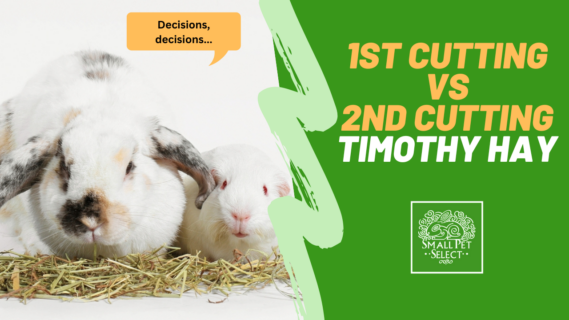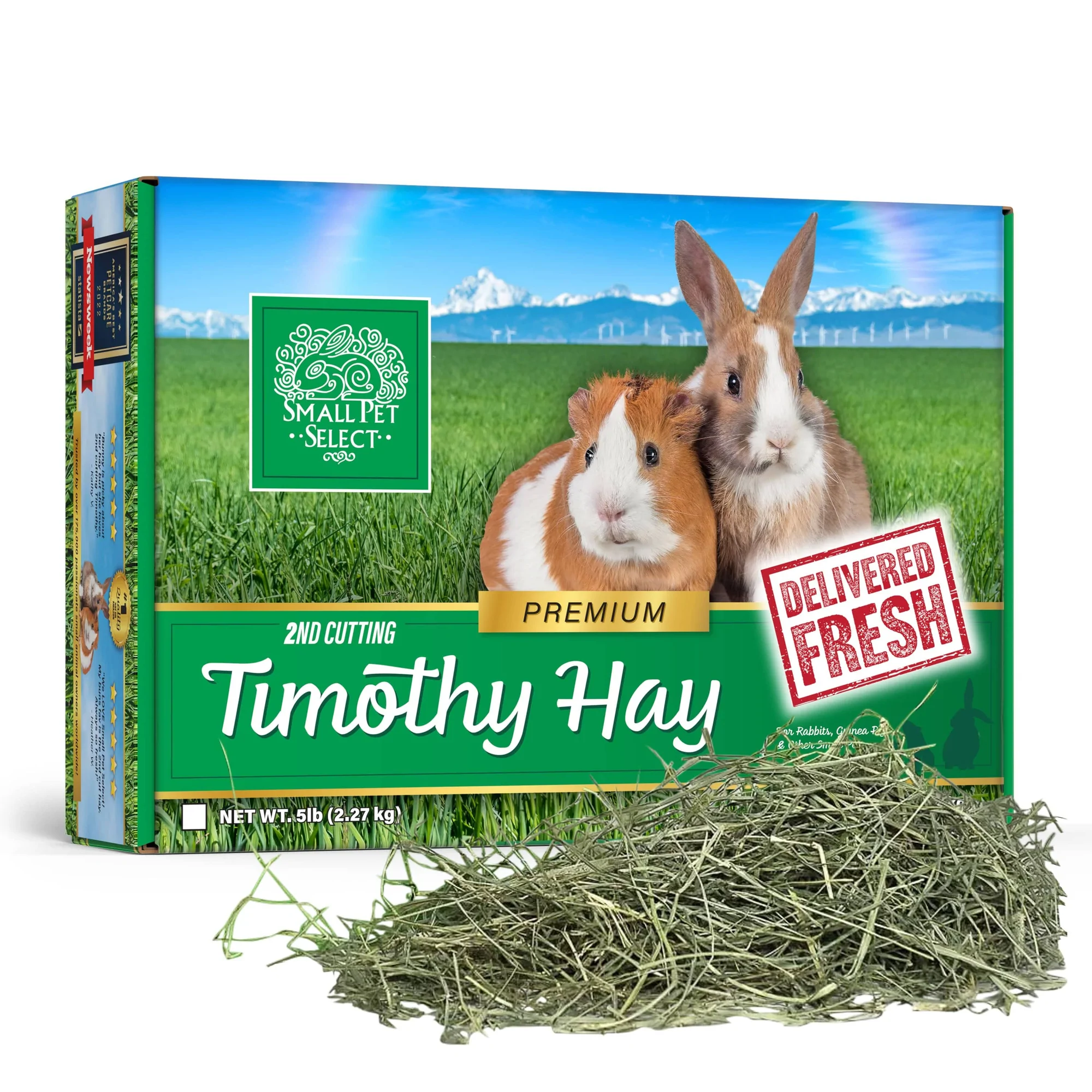When it comes to hay, you know you have choices. So many choices. Even once you decide on Timothy hay you still need to consider the difference between 1st and 2nd cutting Timothy hay. And even 3rd cutting!
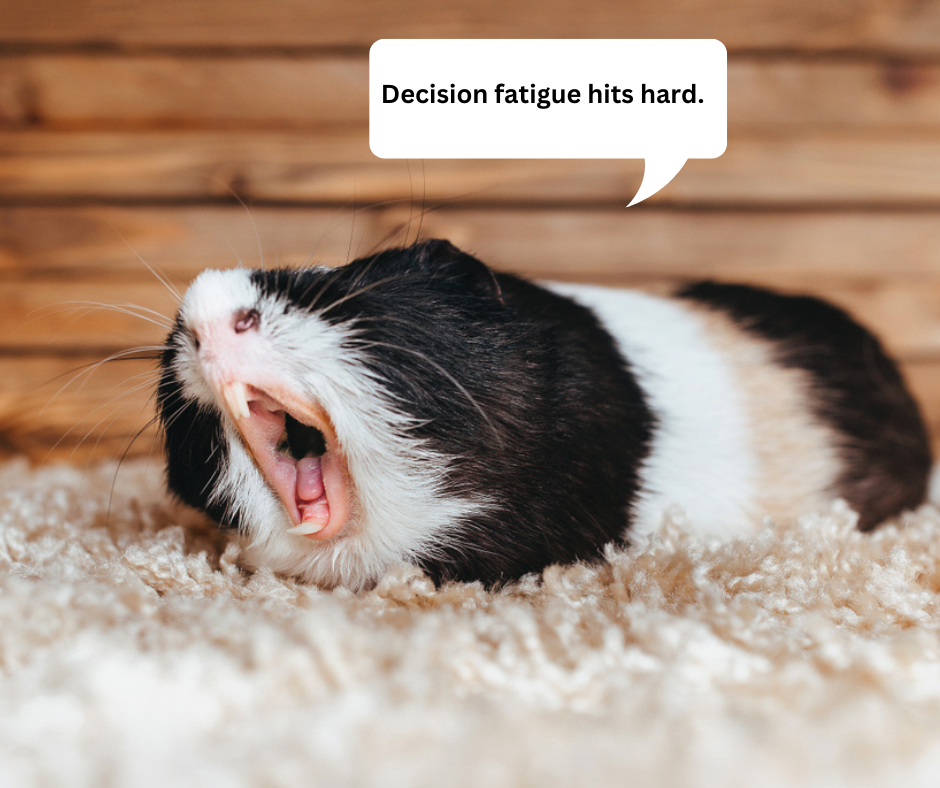
The different cuttings result in different nutrients, texture, and looks. 1st and 2nd cutting Timothy hay are some of the most popular choices. So let’s break down the differences so you know which hay is right for you and your pets.
HAY! Guess what?
We’ve got a special discount for you…
Use discount code HAY5 at checkout to get 5$ OFF 1st or 2nd Cutting Timothy Hay. We recommend trying both at first to see which one your little one prefers.
To redeem this offer, simply visit our store and select 1st cutting timothy hay or 2nd cutting timothy hay (or both!) Once at checkout input discount code HAY-5 to receive $5 OFF!
The Low-Down On 1st Cutting Timothy Hay
Timothy hay can be cut three times in one season. Though most farmers only do two cuts. Each of these cuts yields different results and gives us more choices when trying to find the hay that will work best for our pets.
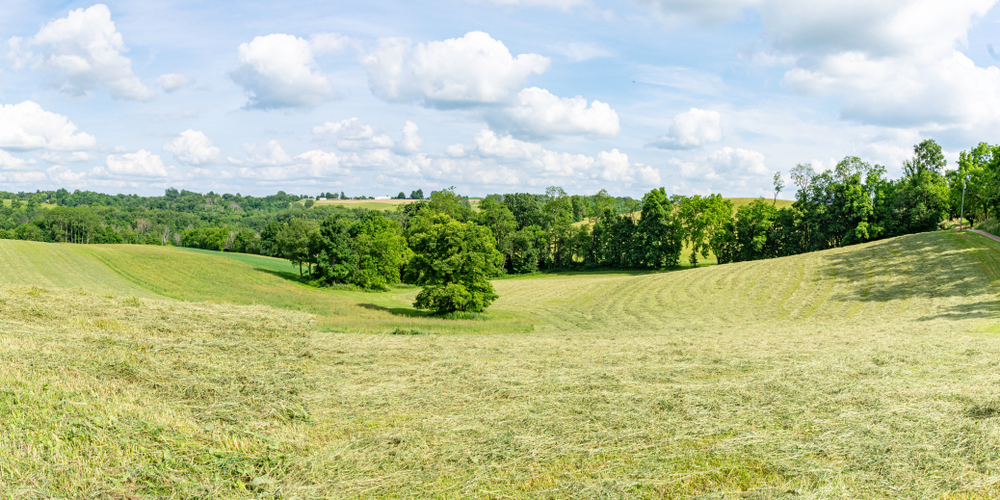
Because the goal at the end of the day will always be to get lots of fiber into our small pets. Rabbits, guinea pigs, and chinchillas need access to hay 24/7. They need to have high-quality hay available that they want to eat a lot of.
And since not all pets are the same, not all pets will eat the same hay. We will dive into this more after we cover the basics!
Nutrients
1st cutting Timothy hay has the most fiber of all three cuts and the least amount of fat and protein. So lots of bulk with fewer calories!
Texture
The toughest of the three cuttings to chew, this hay is great for wearing down teeth. But it definitely gets the chewing muscles going all day and some animals just don’t have the energy for it.
Looks
1st cutting Timothy hay is mostly stems with very little leaves. But this cutting has the most flower heads which get a lot of animals excited. The color of the 1st cutting may be more yellow than the later cuttings.
What You Get With 2nd Cutting Timothy Hay
After the farmer cuts the crop the first time, they let it grow until it’s ready to yield a good 2nd cutting. This second round of growth brings new results!
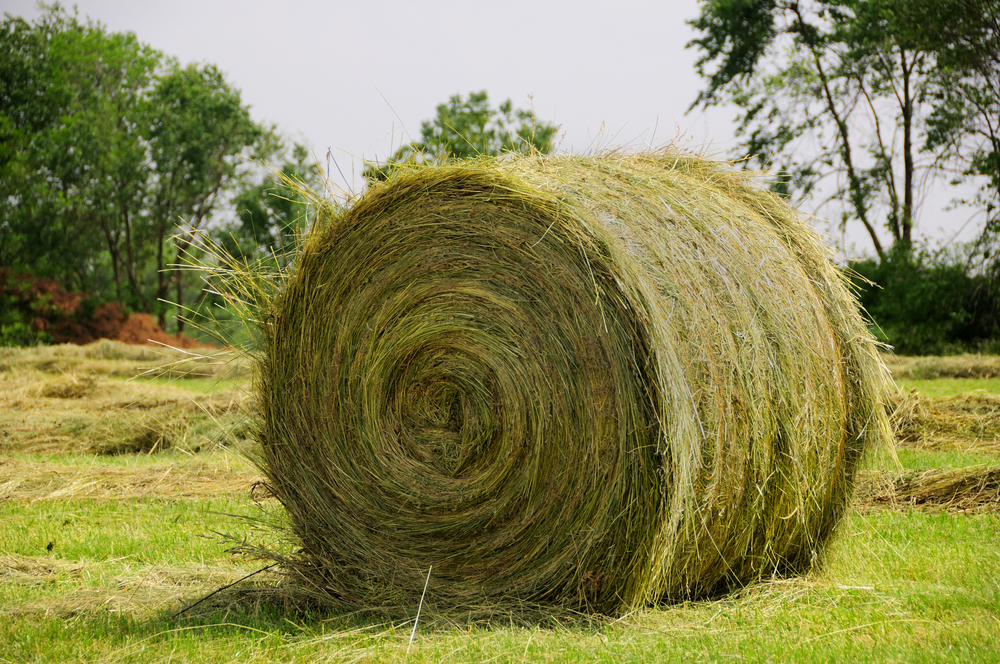
Nutrients
One difference between 1st cutting and 2nd cutting Timothy hay is that 2nd cutting has less fiber. And a little more protein and fat.
But it still contains a very good amount of fiber. So while it doesn’t have as much fiber as the 1st cutting, the texture of the 2nd cutting can be easier to eat for a lot of animals. This means they may get more fiber with 2nd cutting!
Texture
The texture is softer and easier to chew with 2nd cutting Timothy hay while still providing a good amount of fiber. For this reason, 2nd cutting Timothy hay is the most popular choice among small pet owners.
Looks
2nd cutting Timothy hay has fewer stems and more leaves compared to 1st cutting. It also doesn’t have many flower heads. Fewer flower heads are a good thing for people who are sensitive to the pollen on flower heads.
2nd cutting Timothy hay usually has a deeper green color and in many cases, this color can mean more micronutrients. The 2nd Cutting is considered higher quality by some people.
How To Choose Between 1st and 2nd Cutting Timothy Hay
So, which cutting is best will depend on your pet! Here’s what you need to consider when deciding between 1st and 2nd cutting Timothy hay:
Is your pet overweight? They may need the extra fiber of 1st cutting Timothy hay.
Is your pet underweight? They will need the calories of 2nd cutting or even 3rd cutting (more on that in a minute).
Does your pet have dental issues making it harder to chew? 1st cutting won’t work for them!
Is your pet picky with a low appetite? Softer stems are the way to go.
Does your pet need help wearing down their teeth? The thick stems of 1st cutting can help.
How you answer these questions will help guide your decision in finding what’s best for your pet. However, the final say is up to your pet. You can buy as much hay as you want but you can’t force-feed it to your animal.
So you will need to see what they think! And make sure you’re always buying high-quality fresh hay with very little dust. This will keep your furry friend interested.
What About 3rd Cutting Timothy Hay?
When a farmer gets a very good growing season they can get a third cutting out of the crop.
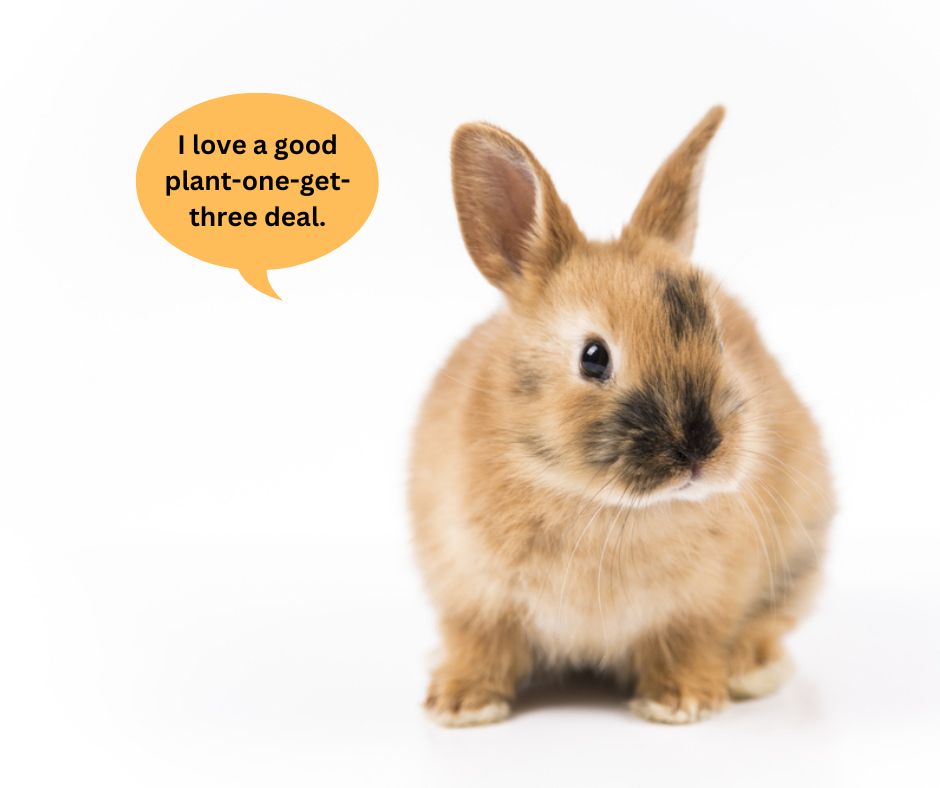
If your rabbit doesn’t like the earlier cuttings or isn’t able to eat enough of it then you have another option!
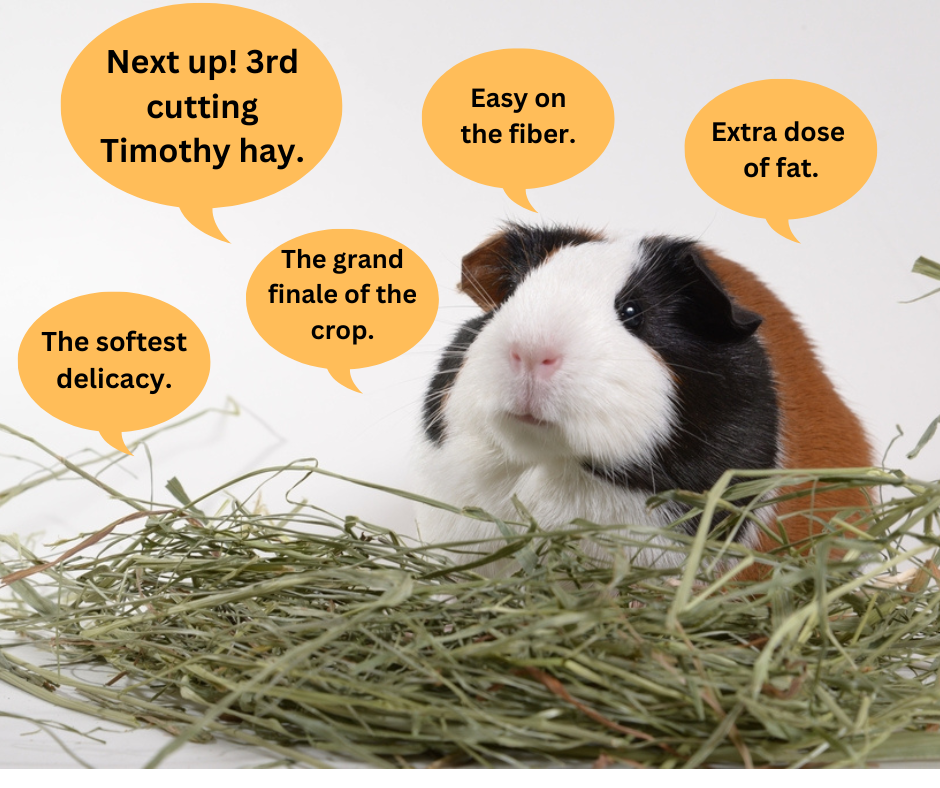
Nutrients
3rd cutting Timothy hay has the least amount of fiber and more fat and protein than 1st and 2nd cutting Timothy hay. Making this hay higher in calories while also being easier to eat. This is why this cutting is given to animals that need to gain weight.
Texture
The 3rd cutting is the softest of the three cuttings. This is a popular choice for animals who aren’t in the best health or have low energy. They can get fiber easier even though this cutting has less fiber overall.
Looks
You won’t see flower heads with the 3rd cutting but you will have lots of leaves and few stems.
If your pet is able to eat one of the first 2 cuttings of Timothy hay then they should. The roughage is great for them. Third cutting is just for those who can’t or won’t indulge in the earlier cuttings.
3rd cutting Timothy hay takes perfect weather conditions to successfully harvest. Which means there is less of this type of hay available. It’s not practical for everyone but we’re grateful that it’s available for those animals who need it.
The Difference Between 1st Cutting and 2nd Cutting Timothy Hay
The 1st cutting of Timothy hay usually yields the largest crop making it fairly easy to get. The plant has been growing the longest with this cutting compared to how long the plant is regrown with 2nd and 3rd.
The results make sense. With a longer growing time you will have more bulky stems. And some loss of color to the plant. 1st cutting Timothy hay is more likely to be left to grow a little too long compared to the 2nd cutting.
So as you can see one plant can come to you in different ways depending on how and when it’s harvested. Giving us a few more options on the road to finding the perfect hay for the perfect pet.
We are not veterinarians, and none of our information should be construed as veterinary advice.
Before adding any new product, please consult your exotic veterinarian. If your pet is acting unwell and you have concerns for their well being, please contact your vet immediately.



